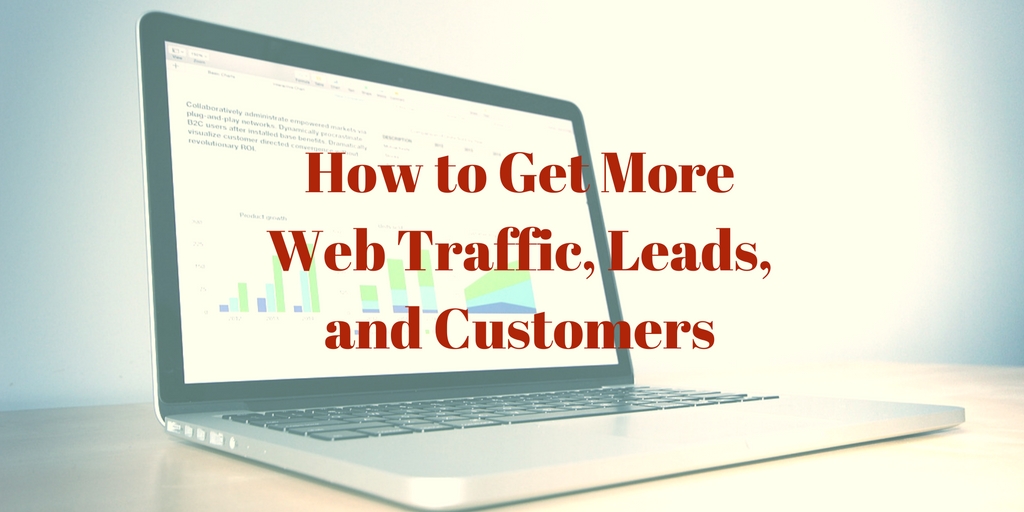
by Fronetics | Sep 19, 2017 | Blog, Content Marketing, Marketing, Strategy
B2B software company Text Request took 4 steps to grow organic traffic, a key component of any content marketing strategy.
We content marketers are always keeping an eye on organic traffic. It’s an indicator of success (though by no means the only one). Basically it lets you know how many of your website’s visitors found you by using a search engine. If you’re consistently publishing quality content that has value to your prospective customers, you should see a steady rise in organic traffic to your website.
But many B2B companies struggle with generating organic traffic to their websites. In fact, 61% of companies list generating traffic as their biggest marketing challenge in the 2017 State of Inbound Report. Over half (55%) list growing traffic to their website as a top priority in the next 12 months.
So how did Text Request, a B2B texting software company, grow organic traffic by 120% in 5 months? Marketing Director Kenneth Burke outlines the four simple steps the team took to drive this growth.
4 steps to growing organic traffic
1. Start with simple changes.
Text Request started with very basic steps to begin driving more traffic to its website. These changes included technical updates to their website, increased site speed, and a new content strategy. The updates to their website made the site more appealing to viewers, and the increased site speed led to a lower bounce rate. Of course, a documented content strategy should be a priority for any company hoping to grow its digital footprint.
2. Create 10x content.
The term ‘10x content’ was coined by Moz founder Rand Fishkin. Essentially, you create content that is ten times better than that which appears in the top search results for that subject. Sounds overwhelming. But think about it in terms of three specific audiences:
- Me: If you wouldn’t consider the content you’re creating valuable, then it most likely won’t add value for others.
- Targets: In order to add value and answer questions and/or inform prospects on a topic, understand what your target audience is lacking and fill that need.
- Competitors: By creating content that is better than the competition, you validate yourself as an industry leader.
3. Revamp existing content.
Content published months or even years ago doesn’t have to fade out. Updating older content gives these posts a renewed value. This is an important part of our content strategy here at Fronetics.
As part of his mission to increase organic traffic, Burke dug through older content to find posts he could revamp, updating as many as 60 posts in 5 months. That may seem like a lot. But, oftentimes, updating older content is easier than starting from scratch — especially if the topics are still relevant and just need updated statistics and research. By revising outdated material, Burke is “confident that they made a huge impact on our organic search traffic.”
4. Strive for backlinks.
Backlinks are incoming links to pages on your website from other websites. If the websites linking to your content are of high quality, search engines will start to consider your website more valuable — otherwise, why would these quality sites link to you? Thus, backlinks are an important component of a search engine optimization strategy.
Understanding their importance in driving organic traffic, Burke worked to improve the amount of backlinks to Text Request’s website. “From December to May, we grew our total number of backlinks by about 60%, which, in addition to driving referral traffic, boosted our standing with search engines.”
Most of the backlinks came from three specific places: HARO, guest posts, and earned links. Most important to earning backlinks was the research Text Request published in its content, which other companies found valuable — valuable enough to cite and link to in their content. These links were validation that the 10x content strategy was paying off for Text Request.
Results
With these four simple steps, Text Request saw a 120% growth in organic traffic to its website. The company more than doubled traffic in five months. More traffic = increased brand awareness = more prospective customers and leads = more sales.
While Burke was able to get pretty dramatic results very quickly, it’s important to note that improvements to your website’s search engine optimization do, most often, take some time to unfold. But, over time, results of your work will continue to amplify
Related posts:

by Fronetics | Apr 5, 2017 | Blog, Content Marketing, Marketing, Social Media, Strategy
Try these out-of-the-box ideas for content and other tactics that can help you generate leads.
Generating new leads and growing your business is imperative to a business’s viability. Referrals from current customers are a strong option for growth, but often they aren’t enough to keep a business thriving.
Generating leads is tough work. Creating cold emails can be daunting, and following up with cold calls can be even worse. Most of the time, these calls fall on deaf ears. People don’t want to be pulled away from their day to hear your sales pitch.
Content marketing is the process of creating content that prospects and customers want to consume to educate them about your business, your expertise in the field, and your products and services. Content is an excellent lead-generation tool. But it’s often difficult to create content that does all these things without being an overt sales pitch — which people definitely don’t want to read. And no read, no lead.
So we’ve created a list of 10 ideas for reaching your prospective audience and generating leads with content and more. They’ll appreciate the information, and you’ll help spread the word about your business. Enjoy!
10 ideas for generating leads
1) Interview an expert about success in the field.
Reach out to leaders in your industry to share their thoughts and tips for success. You’ll prove to potential customers that you are committed to discovering the latest and greatest in your field. Don’t be afraid to ask detailed questions and share real answers. The specific answers will enlighten potential customers and provide actionable items for them to walk away with.
2) Create a video.
Videos are a great way to take advantage of social media platforms like YouTube and Facebook. Create fun, entertaining videos that educate potential customers about issues or pain points your business helps solve. Remember to keep your videos short and to the point.
3) Make a quiz.
When visitors come to your website or social media pages, offer them a creative quiz to capture their contact information. Once they have completed the quiz, you get a lead, and they get the correct answers. You’ll learn about more about them as a potential customer, and they can learn more about your products and services.
Eastern International College created a unique quiz to help students choose a major. The quiz helped students learn about their interests and gave Eastern International College useful insight into counseling them on their class selection.
4) Offer content upgrades.
Content upgrades can be a very valuable lead-generation tool. For example, say you’ve written a blog post about the best time to post on social media. Add an offer for a downloadable guide to create a social media strategy at the end of your post. To get the download, customers must submit their contact information via a form. You get the contact info; the customer gets the content upgrade — it’s a win-win!
5) Show your tried-and-true tactics.
What is really working for your business? Write an honest post that allows potential customers the opportunity to see what has really worked for you, and what hasn’t. Your honesty will help cultivate trust with potential customers and benefit other companies looking to grow their lead base.
6) Host a giveaway.
According to Kissmetric Blog, giveaways can be one of the most successful ways to generate leads. The key is to find out what your customers actually want. You can leverage a giveaway to direct online traffic to a landing page, where you can capture new leads. It is important to find a giveaway that is directed at a specific audience. If your giveaway is too broad, you will be left with large list of dead-end leads.
7) Guest blog on a relevant website.
You’ve reached out to experts to put their tips and success stories on your blog — now you need to do the same. Research the sites that your key audience is visiting and offer to guest blog on their site. Create relevant and valuable content that can generate exposure for your company. You will not only come across as a leader in your industry, but you’ll reach a vast new audience.
8) Offer insight into prospects’ top questions.
Consider questions that you hear from prospects and create in-depth tutorials to answer them. Potential customers will find the step-by-step articles useful, giving you the opportunity for a lead. Oftentimes the companies that step up to answer tough questions or provide instructions in easy-to-follow formats are the ones that get the business.
9) Get involved in the community.
There has never been a greater call to get involved in community outreach. Companies that are committed to creating change and engagement in their communities create trust in their customers. Volunteer at local events, guest speak at schools, or help local student organizations. You can demonstrate your expertise while creating real ties to the community. This will help you stand out not only as a leader in your industry, but as a caring and involved brand.
10) Offer a free trial.
According to HubSpot, “free trials of a brand’s services help get a prospect’s foot halfway through the door.” Offering free trials of your services is a great way to demonstrate how your company can add value to your customers. Once they experience the benefits of your services or products, they’ll be more likely to purchase them in the future. The free trial can lead to sales in a low-pressure situation for the customer.
Related posts:


by Fronetics | Mar 13, 2017 | Blog, Content Marketing, Marketing, Social Media, Supply Chain
Use these two strategies to help your blog generate leads faster.
Creating quality content for your blog that educates and engages consumers takes significant investment and resources. But, unfortunately, blog posts usually don’t deliver the immediate ROI that many companies are looking for.
A blog is an excellent lead-generation tool. But, as I’ve written about before, it takes time to generate leads and sales.
Like a fine wine, blog posts become more valuable with age.
Older content — likely, with more shares, likes, and referrals from other webpages — hold more credibility with search engines. The more credible the blog post, the higher it will rank in search engine results. What does this mean for you? The more time your blog has to circulate the internet, the more opportunity people have to read it, the higher it will appear in search queries. It’s that simple.
But your boss wants to see results in the form of leads and sales now. How can you bridge the gap between giving your blog the time it needs to become credible and boosting your lead-generating efforts for this sales cycle?
If you want to accelerate lead generation, it’s going to take a greater investment. But if you’re willing to commit more time and resources, here are two things you can do to see results sooner than later.
Two things you can do now to get leads faster
1. Publish more frequently.
Search engines value posting frequency because it shows that your blog is a consistent source of content. The question is, how much can your organization publish without experiencing a decline in quality and relevancy? Those are other factors influencing search engine rankings, not to mention readership, leads, and conversions.
But “more frequently” doesn’t have to mean going from 0 to 60. Even publishing once more per week can make a dramatic impact. This story, for example, shows how publishing one more post per week helped a client’s web traffic increase by 23%, sales leads double, and a prospect convert to a customer — and that was just in just one month.
A HubSpot study showed a tipping point around 400 total blog posts — blogs with 401+ total posts generated twice as much traffic as those that had published 301-400 posts. And more specifically, B2B companies with 401+ total blog posts generated nearly 3X as many leads as those with 0-200 posts. The faster you can reach that 400 mark, the quicker your results.
2. Don’t neglect your old content.
It’s important to keep in mind that the majority of your web traffic (aka potential leads) will first encounter your older content. Looking at Fronetics’ most-viewed posts last month, for example, 80% were published at least six months prior. In fact, 50% were more than a year old.
What does that mean? For one, you should keep tending to your already published content, particularly those posts that prove to be a consistent source of traffic. Update information; add links to new related posts or other relevant resources; and seek opportunities to insert or update calls-to-action to current offers and campaigns. Making sure those older, consistently popular posts continue to serve and engage your readers will increase your chances of conversion.
Secondly, it’s crucial that you look beyond how the posts you published recently perform. Something that doesn’t get a lot of views in the first week may be a huge traffic source and lead converter in a little time. Many content management systems, like HubSpot, can generate attribution reports, which tell you which web pages users most often visit before converting to a lead. Compare these pages with your high-traffic pages that don’t make the list to see how you can create more opportunities for lead conversion on the pages earning the most traffic.
If you invest the time and resources to run a blog, you owe it to yourself to see it through to success. Doing these two small things can get you there faster.
Related posts:

by Fronetics | Feb 9, 2017 | Blog, Content Marketing, Marketing, Strategy
Time can be a blog’s best friend when it comes to gaining leads, but there are a few things you can do to accelerate lead-generation efforts.
Patience is a virtue, but it’s a particularly difficult one to mind when you’re trying to get your business off the ground.
Whether you are just starting out, are trying to turn things around, or are just looking to inject a little energy into things after some slow growth, your company has probably made an investment in your marketing efforts. Now comes the tough part, if you’re on the marketing team: The bosses are going to want to see results in the form of leads and sales.
Fair enough. Blogging is one of the best ways to boost your lead-generation efforts. The trouble is, however, that is normally takes some for those benefits to come to fruition.
I’m not going to say it’s a marathon…
But blogging is certainly not a sprint. Your posts need time to start drawing traffic — and then, from traffic comes leads. So the transitive property tells us that lead generation takes time. Here’s why.
As with many things, blog posts become more credible with age. That is to say, search engines value things that older content has had more time to accumulate, like social shares and referrals from other web pages. The more relevant a blog post proves itself to be to readers over time, the higher it will rank in search engine results.
On the other hand, new blogs without much content don’t have much to tell search engines. Search engines don’t trust them yet — and search engines’ algorithms are designed to avoid leading searchers down a stray path. So posts from new or young blogs are less likely to appear within the first page(s) of search results, which is key to sourcing organic traffic.
So what’s a marketer who is charged with generating leads to do?
Set realistic expectations
Be realistic about how quickly your blog will start generating leads when you first set your content strategy. Consider things like the length of your sales cycle. You can’t expect a reader to hasten down the sales funnel any faster than a normal prospect. And remember that the reader probably won’t catch your post on the first day it’s published. (More on that later.) So, if your sales cycle is 90 days, you might see a lead 90 days after you start publishing. But, in reality, it will probably take a little longer.
Instead of relying entirely on leads to define success, you should spend the first months focusing on the metrics that are precursors to lead generation. Increased web traffic and greater social reach and engagement, for example, are solid proof that the needle is moving in the early days of a new content marketing program. Set goals for these metrics, and communicate with leadership that they are all indicators that your content strategy is working, and that leads should follow in time.
But how can I get my blog to generate leads faster?
If you want to accelerate lead generation, it’s going to take a greater investment. But if you’re willing to commit more time and resources to speed things along, here are two things you can do.
1. Publish more frequently.
Search engines value posting frequency because it shows that your blog is a consistent source of content. The question is, how much can your organization publish without experiencing a decline in quality and relevancy? Those are other factors influencing search engine rankings, not to mention readership, leads, and conversions.
But “more frequently” doesn’t have to mean going from 0 to 60. Even publishing once more per week can make a dramatic impact. This story, for example, shows how publishing one more post per week helped a client’s web traffic increase by 23%, sales leads double, and a prospect convert to a customer — and that was just in just one month.
A HubSpot study showed a tipping point around 400 total blog posts — blogs with 401+ total posts generated twice as much traffic as those that had published 301-400 posts. And more specifically, B2B companies with 401+ total blog posts generated nearly 3X as many leads as those with 0-200 posts. The faster you can reach that 400 mark, the quicker your results.
2. Don’t neglect your old content
It’s important to keep in mind that the majority of your web traffic (aka potential leads) will first encounter your older content. Looking at Fronetics’ most-viewed posts last month, for example, 80% were published at least six months prior. In fact, 50% were more than a year old.
What does that mean? For one, you should keep tending to your already published content, particularly those posts that prove to be a consistent source of traffic. Update information; add links to new related posts or other relevant resources; and seek opportunities to insert or update calls-to-action to current offers and campaigns. Making sure those older, consistently popular posts continue to serve and engage your readers will increase your chances of conversion.
Secondly, it’s crucial that you look beyond how the posts you published recently performed. Something that doesn’t get a lot of views in the first week may be a huge traffic source and lead converter in a little time. Many content management systems, like HubSpot, can generate attribution reports, which tell you which web pages users most often visit before converting to a lead. Compare these pages with your high-traffic pages that don’t make the list to see how you can create more opportunities for lead conversion on the pages earning the most traffic.
Most importantly, if you invest the time and resources to run a blog, you owe it to yourself to see it through to success. Just because you don’t generate hundreds of leads in the first few months doesn’t mean you won’t eventually. It’s just going to take some time.
Related posts:


by Fronetics | Sep 29, 2016 | Blog, Content Marketing, Logistics, Manufacturing & Distribution, Marketing, Strategy, Supply Chain, Warehousing & Materials Handling
Content marketing can help your organization amplify its efforts to drive traffic, improve conversion rates, and increase sales.
A recent survey of over 4,500 marketers at organizations around the globe found that converting leads to customers (74%) and growing traffic to their websites (57%) were their companies’ top marketing priorities. Perhaps not surprisingly, these marketers also overwhelmingly reported that generating traffic and leads was their top challenge. Often our business priorities are the most difficult to achieve.
Enter, content marketing.
Content marketing is a form of inbound marketing in which businesses publish content to attract prospects who are interested in products in services like theirs. This marketing approach can be highly effective in growing brand awareness, generating leads, and increasing sales. In fact, according to the same survey, organizations using inbound marketing were four times more likely to rate their marketing strategy highly than outbound organizations.
Let’s look at one example from the warehousing sector.
Business was decent for Company X. It had experienced positive growth for over a decade, despite lacking a clear marketing strategy. But leadership started to wonder: Are we missing opportunities for growth?
Company X sought a multi-level digital marketing strategy that would help them increase web traffic, generate more leads, and convert prospects to customers. The team hired Fronetics to create and implement such a strategy.
After 24 months, the results were telling: Web traffic increased by nearly one-fifth (19%). Company X tracked 244 high-quality leads directly sourced from its new content marketing efforts. And new business grew by a remarkable 30%.
Content marketing was highly successful for Company X in achieving its business goals of driving traffic and new business. In fact, the organization realized many other positive benefits as well. You can read about more of them, as well as the strategy Fronetics used to get there, by downloading the case study below.

Want to increase traffic to your business’ website and generate more leads and customers? Have you tried content marketing? Here are a few resources to get you started.
Related resources:
Need more help? Contact Fronetics to request a free strategy session.








